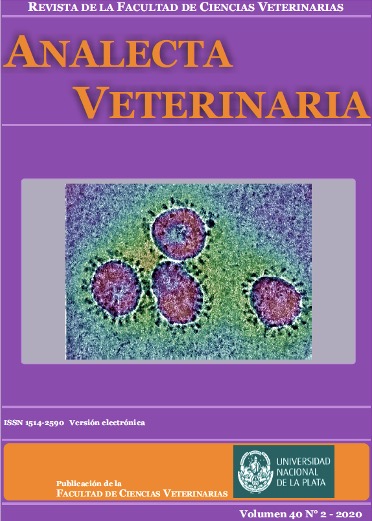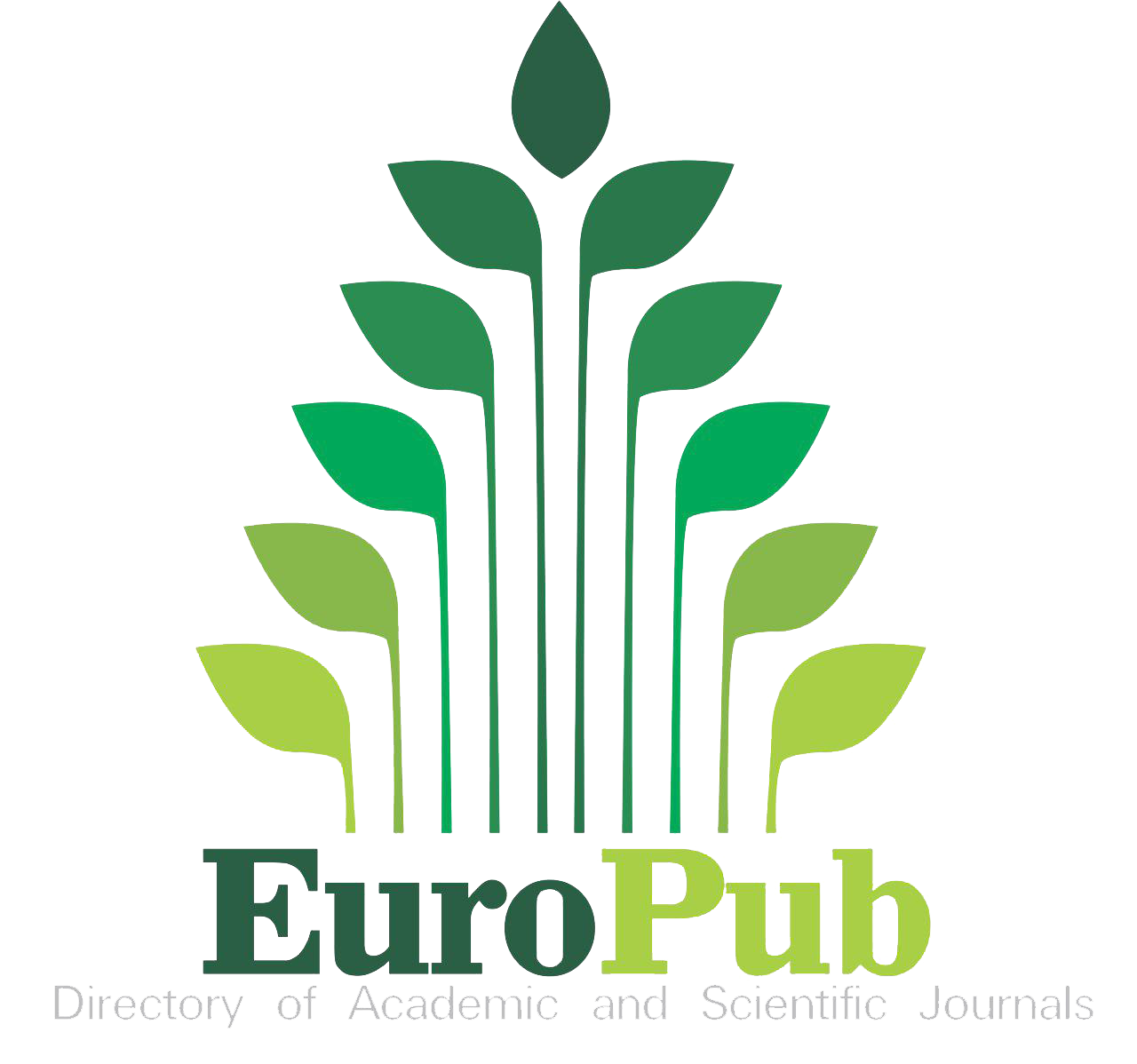Protective role of chlorogenic acid on DNA damage caused by ochratoxin A exposure
Chlorogenic acid and its effect on ochratoxin A
DOI:
https://doi.org/10.24215/15142590e049Palavras-chave:
ochratoxin A, genotoxicity, chlorogenic acidResumo
Chlorogenic acid (ChlA) has shown short-term protective effects against the cyto-genotoxic effects of ochratoxin A (OTA). The present study evaluated the effect of oral administration of ChlA in male Wistar rats exposed to OTA. OTA (0.4 mg/kg bw/day), ChlA (5 mg/kg bw/day), or the combination of both, were administered orally to animals during 28 days. No deaths, decrease in feed consumption or change in the body weight of animals were observed in any group. In the OTA-treated group a decrease in locomotion as well as increased DNA damage in blood, kidney and bone marrow cells were observed. ChlA alone was not genotoxic for animals. The combination of OTA+ChlA decreased the DNA damage by 37% in blood cells, by 55% in kidney cells and by 80% in bone marrow cells compared to OTA-treated group. In conclusion, oral treatment with ChlA showed a good protective effect on genotoxicity produced by OTA in rats during 28 days exposure.
Referências
Abdel-Wahhab MA, Aljawish A, El-Nekeety AA, Abdel-Aiezm SH, Hassan NS. 2017. Chitosan nanoparticles plus quercetin suppress the oxidative stress, modulate DNA fragmentation and gene expression in the kidney of rats fed ochratoxin A-contaminated diet. Food and Chemical Toxicology. 99:209-21. https://doi:10.1016/j.fct.2016.12.002
Cariddi LN, Sabini MC, Escobar FM, Montironi I, Mañas F, Iglesias D, Comini LR, Sabini LI, Dalcero AM. 2015. Polyphenols as possible bioprotectors against cytotoxicity and DNA damage induced by ochratoxin A. Environmental Toxicology and Pharmacology. 39: 1008-18. https://doi:10.1016/j.etap.2015.03.013
Cariddi LN, Escobar FM, Sabini MC, Campra NA, Bagnis G, Decote-Ricardo D, Freire-de-Lima CG, Mañas F, Sabini LI, Dalcero AM. 2016. Phenolic acid protects of renal damage induced by ochratoxin A in a 28-days-oral treatment in rats. Environmental Toxicology and Pharmacology.43:105-11. https://doi:10.1016/j.etap.2016.03.004
Carranza-Torres IE, Viveros-Valdéz E, Guzmán-Delgado NE, García-Davis S, Morán-Martínez J, Betancourt-Martínez ND, Balderas-Rentería I, Carranza-Rosales P. 2019. Protective effects of phenolic acids on mercury-induced DNA damage in precision-cut kidney slices. The Iranian Journal of Basic Medical Sciences. 22(4):367-75. https://doi:10.22038/ijbms.2019.30056.7242
Corcuera LA, Vettorazzi A, Arbillaga L, Pérez N, Gil AG, Azqueta A, González-Peñas E, García-Jalón JA, López de Cerain A. 2015. Genotoxicity of aflatoxin B1 and ochratoxin A after simultaneous application of the in vivo micronucleus and comet assay. Food and Chemical Toxicology. 76:116-24. https://doi:10.1016/j.fct.2014.12.003
Jackson P, Pedersen LM, Kyjovska ZO, Jacobsen NR, Saber AT, Hougaard KS, Vogel U, Wallin H. 2013. Validation of freezing tissues and cells for analysis of DNA strand break levels by comet assay. Mutagenesis. 28(6):699-707. https://doi:10.1093/mutage/get049
Kőszegi T, Poór M. 2016. Ochratoxin A: Molecular interactions, mechanisms of toxicity and prevention at the molecular level. Toxins (Basel).8(4):111. https://doi:10.3390/toxins8040111
Muzaffer D, Pérez JF. 2006. Contaminación por micotoxinas en los piensos: efectos, tratamiento y prevención. XXII Curso de Especialización FEDNA. 1-17.
Mazur-Kuśnirek M, Antoszkiewicz Z, Lipiński K, Fijałkowska M, Purwin C, Kotlarczyk S. 2019. The effect of polyphenols and vitamin E on the antioxidant status and meat quality of broiler chickens fed diets naturally contaminated with ochratoxin A. Archives of Animal Nutrition. 73(6):431-44. https://doi:10.1080/1745039X.2019.1639445
Quiñones M, Miguel M, Aleixandre A. 2012. Los polifenoles, compuestos de origen natural con efectos saludables sobre el sistema cardiovascular. Nutrición Hospitalaria. 27(1):76-89. https://doi:10.1590/S0212-16112012000100009
Ravelo Abreu A, Rubio Armendáriz C, Gutiérrez Fernández AJ, Hardisson de la Torre A. 2011. La ocratoxina A en alimentos de consumo humano: revisión. Nutrición Hospitalaria. 26(6):1215-26. https://doi:10.1590/S0212-16112011000600004
Tajik N, Tajik M, Mack I, Enck P. 2017. The potential effects of chlorogenic acid, the main phenolic components in coffee, on health: a comprehensive review of the literature. European Journal of Nutrition. 56:2215-44. https://doi:10.1007/s00394-017-1379-1
Vettorazzi A, González-Penas E, López de Cerain A. 2014. Ochratoxin A kinetics: A review of analytical methods and studies in rat model. Food and Chemical Toxicology.72:273-88. https://doi:10.1016/j.fct.2014.07.020
Wang H, Wei Y, Xie Y, Yan C, Du H, Li Z. 2020. Ochratoxin A and fumonisin B1 exhibit synergistic cytotoxic effects by inducing apoptosis on rat liver cells. Toxicon. 181:19-27. https://doi:10.1016/j.toxicon.2020.04.094
Xu JG, Hu QP, Liu Y. 2012. Antioxidant and DNA-protective activities of chlorogenic acid isomers. Journal of Agricultural and Food Chemistry. 60:11625-30. https://doi:10.1021/jf303771s
Downloads
Publicado
Edição
Seção
Licença
Los autores/as conservan los derechos de autor y ceden a la revista el derecho de la primera publicación, con el trabajo registrado con la licencia de atribución de Creative Commons, que permite a terceros utilizar lo publicado siempre que mencionen la autoría del trabajo y a la primera publicación en esta revista.

Analecta Veterinaria por Facultad de Ciencias Veterinarias se distribuye bajo una Licencia Creative Commons Atribución-NoComercial-SinDerivar 4.0 Internacional.




























